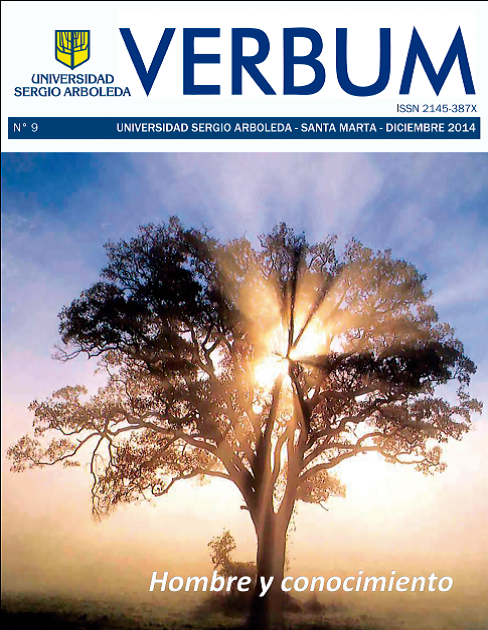Resumen
Las recientes investigaciones sobre bullying escolar, “acoso escolar”, han puesto de manifiesto que existen problemas psicosociales y educativos que caracterizan de manera muy específica a los alumnos implicados en los distintos estatus de este fenómeno (víctima, agresor, testigo). La manera mediante la cual los resultados de estas investigaciones son generalizables a los jóvenes que participan directa o indirectamente en ciberbullying está aún por determinar. En nuestro trabajo, y para una muestra final de 783 jóvenes, hemos aplicado un cuestionario, el CIBERBULL, y los resultados obtenidos, nos indican, que si bien existen algunos paralelismos entre ambos fenómenos, sobre todo en lo referente a las características de los adolescentes implicados en el ciberbullying, se han encontrado varias diferencias importantes entre estas dos formas de bullying, lo cual debería incitar a seguir la investigación de este fenómeno cuyo predominio comienza a ser preocupante.
Referencias
Belsey, B. (2005). Cyberbullying: an emerging threat to the “always on” generation, 1-16. Consultado el 12-02-2010. URL: http://www.cyberbullying.ca/pdf/Cyberbullying_Article_by_Bill_Belsey.pdf
Cerezo, F. (2008). Agresores y víctimas del bullying. Desigualdades de género en la violencia entre escolares. Información Psicológica, 94, 49-59.
Cerezo, F. (2008). Acoso escolar. Efectos del bullying. Boletín de la Sociedad de Pediatría de Asturias, Cantabria, Castilla y León, 48, 355-358.
Dehue, F. (2013). Cyberbullying Research: New Perspectives and Alternative Methodologies. Introduction to the Special Issue Journal of Community & Applied Social Psychology , 23(1),1-6.
Flores, J. (2008). Ciberbullying, nueva forma de acoso, 1-2. Consultado el día 5-04-2010. URL: http://www.pantallasamigas.net.
Hernández, M.A. (2006). Ciberbullying. Una auténtica realidad. Ponencia presentada al III Congreso ONLINE- Observatorio para la cibersociedad: Conocimiento abierto. Sociedad Libre,
Cataluña, España.
Informe del Defensor del Pueblo (2007). Violencia escolar: el maltrato entre iguales en la Educación Secundaria Obligatoria 1999-2006. Madrid.
Juvonen, J. & Gross, E.F. (2008). Extending thes chool grounds? Bullying experiences in cyberspace. J Sch Health, 78(9), 496-505.
Kiriakidis, S.P. & Kavoura, A. (2010). Cyberbullying: a review of the literature on arassment through the Internet and other electronic means. Fam Community Health, 33(2),82-93.
Kowalski, R.M. & Limber, S.P. (2007). Electronic bullying among middle school students. Journal Adolesc. Health, 41(6), 22-30.
Lenhart, A. (2007). Cyberbullying and online teens {versión electrónica}. Pew Internet y American life project, 1-8.
Li, Q. (2006). Cyberbullying in schools. A research of gender differences. School Psychology International, 27, 1-14.
Mason, K.L. (2008). Cyberbullying: A preliminary assessment for school personnel. Psychology in the Schools. 45(4), 323-348.
Mitchell, K.J., Finkelhor, D., Wolak, J., Ybarra, M.L. & Turner, H. (2011). Youth Internet Victimization in a Broader Victimization Context. Journal Adolescence Health, 48(2), 128-134.
Mitchell, K.J., Ybarra, M. & Finkelhor, D. (2007). The relative importance of online victimization in understanding depression, delinquency, and substance use. Child Maltreat. 12(4), 314-324.
Nicholson, T.R. (2000). Attachment style in young offenders: parents, peer and delinquency. Dissertation Abstracts International, 60, 63-77.
Olweus, D. (1980). Familial and temperamental determinants of aggressive behaviour in adolescent boys: A causal analysis. Developmental Psychology, 16, 644-660.
Oñate, A. & Piñuel, I. (2007). Informe Cisneros X: Acoso y Violencia Escolar en España. Instituto de Innovación Educativa y Desarrollo Directivo.
Ortega, R., Calmaestra, J. & Mora, J. A. (2008). Ciberbullying. International Journal of Psychology and Psychological Therapy, 8(2), 183-192.
Suzuki, K., Asaga, R., Sourander, A., Hoven, C.W. & Mandell, D. (2012). Cyberbullying and adolescent mental health. Journal Adolescent Medecine and Health, 24(1), 27-35.
Tokunaga, R.S. (2010). Following you home from school: a critical review and synthesis of research on cyberbullying victimization. Computers in human behavior, 26, 277-287.
Torrente, G. y Rodríguez, A. (2003). Estilo educativo y clima familiar como antecedentes de conducta antisocial. Encuentros en Psicología Social, 1, 90-93.
Willard, N. (2005). Educator’s guide to cyberbullying and cyberthreats. Consultado el 14-03-2010. URL: http://www.cyberbully.org/cyberbully/docs/cbcteducator.pdf
Willard, N. (2006). Cyberbullying and Cyberthreats: Effectively managing internet use risks in schools. Consultado el 7-02-010. URL: http://www.cyberbully.org/onlinedocs/cbct.pdf.
Ybarra, M. L., Diener-West, M. and Leaf, P. (2007). Examining the Overlap in Internet Harassment and School Bullying: Implications for School Intervention. Journal of Adolescent Health, 41(6), 42-50.

